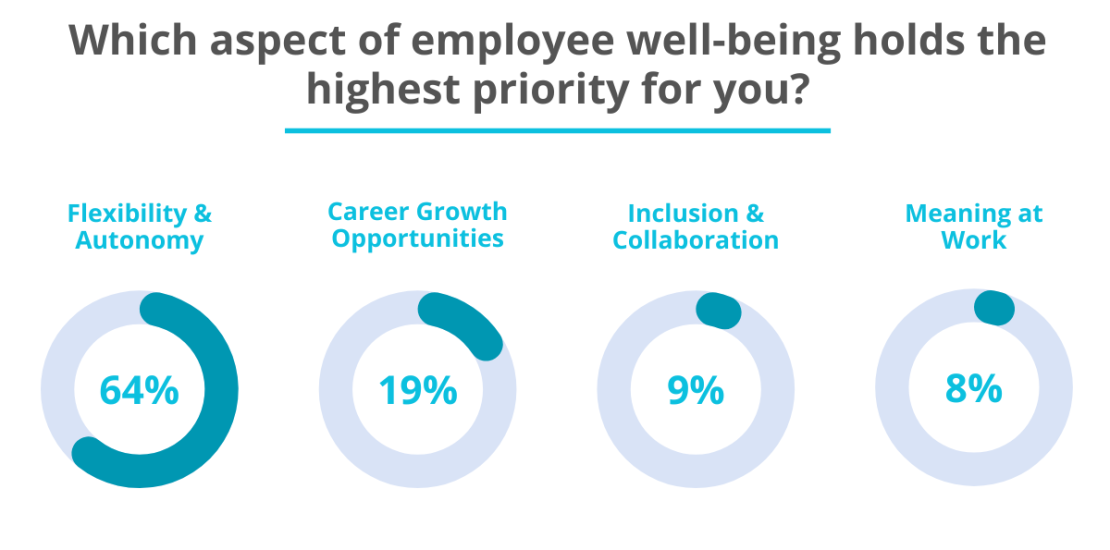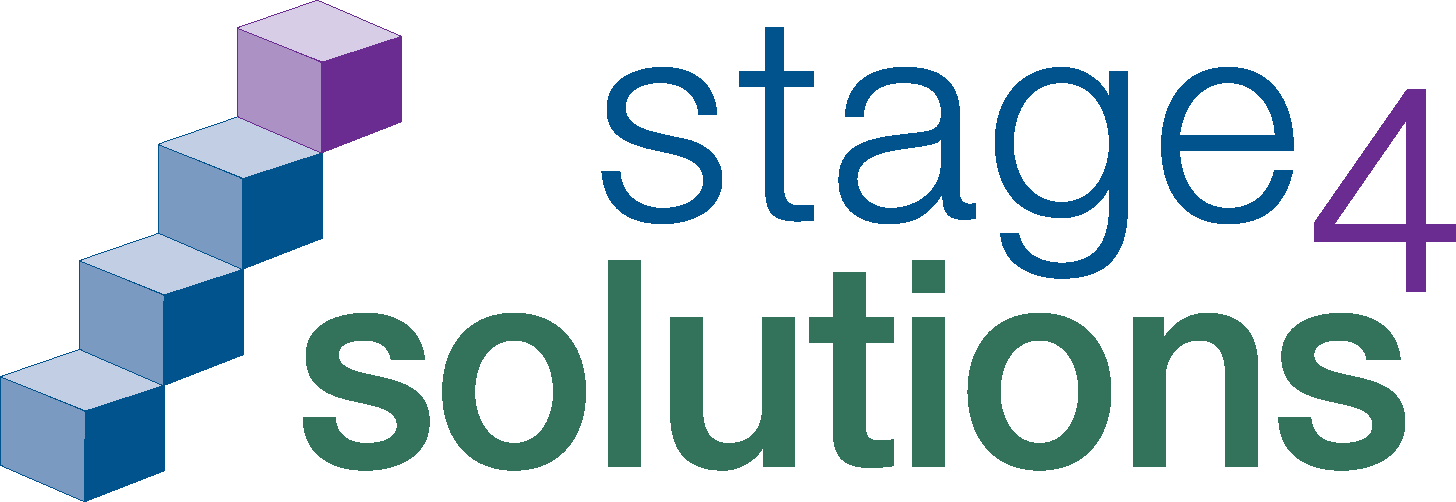From Burnout to Well-Being: Rethinking Employee Wellness in a Changing World
- August 29, 2023
- Posted by: Stage 4 Solutions
- Category: Blog

A global trend highlights that 70% of knowledge workers worldwide have experienced burnout within the past year, and a recent study reveals that 38% of employees said that they wouldn’t wish their job on their worst enemy. Evidently, the “workplace wellness” initiatives have fallen short of goals. And the pandemic has served as a catalyst, expediting changes in work paradigms, and intensifying mental health and well-being challenges. We wanted to understand which aspect of employee well-being holds the highest priority in organizations’ efforts to enhance the workplace, and we polled our community for their insights.
Which aspect of employee well-being holds the highest priority for you? (single answer)
–Flexibility & Autonomy 64%
–Career Growth Opportunities 19%
–Inclusion & Collaboration 9%
–Meaning at Work 8%
A vast majority of our community, encompassing 64% of respondents, said that flexibility & autonomy is the most pronounced facet of employee well-being for them. This preference underscores a monumental shift in work culture, catalyzed by the rise of remote work and the realization of the significance of work-life integration. However, there is considerable conflict over this topic. Some companies are increasingly embracing flexible work arrangements, entrusting employees with the autonomy to shape their work schedules and environments, while many others are limiting remote work options in a push to have employees return to onsite work, and some others continue to offer hybrid work options. Considering the preferences and needs of the workforce, an efficient practice is to set and agree upon clear KPIs and goals to promote accountability and autonomy focused on outcomes vs. location.
Only 19% of respondents reported that “Career Growth Opportunities” is the top aspect of employee well-being for them. This well-being aspect centers around fulfilling the fundamental human needs for knowledge acquisition, achievement, and success, such as enabling employees to acquire new insights and skills and fostering growth intellectually, socially, professionally, and emotionally. In the absence of ongoing learning and shared objectives, employees may experience stagnation and reduced effectiveness. On the other hand, accomplishment is the result of successfully attaining goals and making a meaningful impact. Achievements instill a sense of competence, which in turn mitigates stress, anxiety, and self-doubt. By enhancing opportunities for learning, accomplishment and development, organizations cultivate a more optimistic outlook among employees, leading to increased confidence in their abilities and enthusiasm for contributing to the organization’s success.
Inclusion and collaboration received 9% of the votes. Considering the significant time employees spend at work, the relationships that are developed in the workplace can have an impact in various ways. We were surprised by this low percentage, as many companies prominently promote their DEI initiatives. However, perhaps these initiatives are interpreted by employees as more corporate-level strategies that do not really affect their well-being.
Lastly, only 8% of survey participants have marked “Meaning at Work” as the most important aspect of employee well-being programs. Companies embracing this priority aspire to align individual contributions with broader organizational missions, generating a sense of purpose that provides the potential to promote increased job satisfaction, motivation, and commitment. While this is an important goal, it seems like it is less important to employees’ well-being than giving employees more flexibility and autonomy.
In conclusion, the landscape of employee well-being is undergoing a transformative shift, fueled by the recognition of its important implications on individuals, organizations, and society as a whole. The preference for flexibility and autonomy signals a departure from conventional work structures, reflecting a growing recognition of work-life integration. Simultaneously, the emphasis on career growth opportunities illuminates a path toward continuous learning and skill enhancement, where individual advancement intertwines with organizational progress. Moreover, the pursuit of meaning at work resonates as a testament to the workforce’s desire for purpose-driven engagement. Inclusion and collaboration which fuels the overall workplace wellness calls for leadership to embrace comprehensive policies and mindset shifts.
In your opinion, which aspect of employee well-being holds the highest priority? Please share with us!

